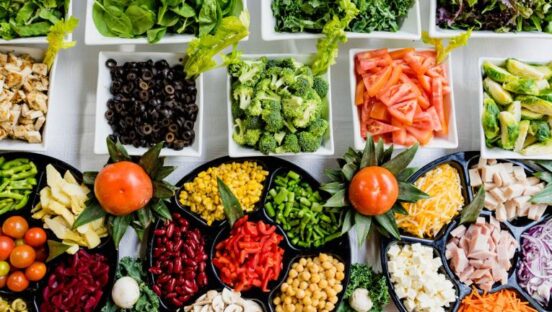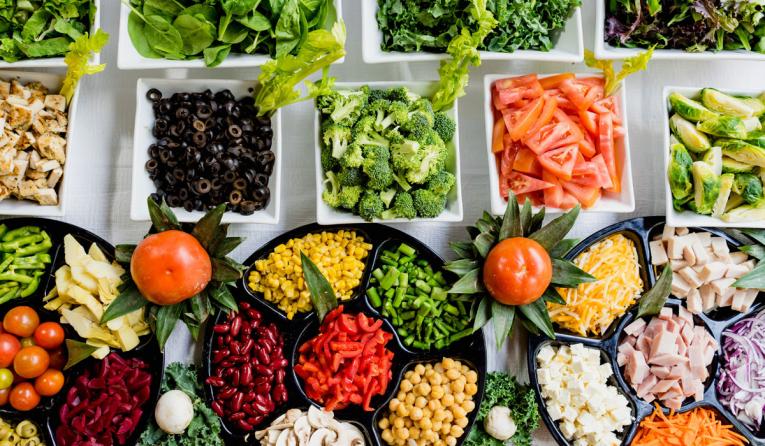The restaurant industry faces an emissions challenge. Food systems account for one-third of global greenhouse gas emissions. Restaurants are doing nearly $1 trillion in business each year, meaning they are responsible for a significant portion of that food-related carbon output.
Consumers and regulators are increasingly demanding restaurants account for and reduce their emissions. About 80 percent of consumers say they consider sustainability in their purchasing decisions. New California laws and pending SEC rules will compel many chains to track and report their emissions.
About 90 percent of a restaurant’s carbon output comes from its supply chain, which is classified as scope 3, category 1 emissions. This category comprises upstream emissions generated by livestock, food production and restaurant supplies, among others. While restaurants don’t directly control these emissions, they are still responsible for them.
As restaurants feel more pressure to reduce their carbon footprint and build a sustainable business, accounting for and influencing these emissions will be critical.
Why scope 3 emissions matter
As the climate crisis intensifies and regulatory scrutiny mounts, scope 3 emissions will be the key to unlocking meaningful change. The newest climate law, California’s Climate Corporate Data Accountability Act, requires companies with over $1 billion in annual revenue operating in California to report and verify their scope 1, 2 and 3 greenhouse gas emissions. These regulations cover large restaurant chains in the state directly but will also impact smaller businesses. Large corporations gathering the required information will need emissions data from their supply chain partners.
Additionally, the SEC is poised to release finalized climate reporting requirements. The regulations will force more businesses to file reports. As a result, more companies will be required to supply emissions data to their value chain partners.
Scope 3’s importance extends beyond just reporting. This emissions insight is critical to a business’s long-term viability. Because they can’t deliver their food or services without their suppliers, restaurants’ climate risk is inseparable from their vendors’ risk. For example, certain ways of growing or cultivating food may not be operable in a low-carbon economy, and restaurants will take a financial hit as they scramble to find new vendors that have adapted to the new way of working.
Scope 3 data gives restaurants a comprehensive view of their climate risk, helping them identify reduction levers and build a resilient business model for the decarbonized future.
How to measure supply chain emissions
Measuring supply chain emissions likely seems complex and overwhelming, but it is possible. These steps will guide a restaurant’s approach to supply chain emissions management.
1. Prioritize data-gathering efforts
Most supply chain emissions data exists outside of a restaurant’s possession. Collecting it is an incremental process. To find a starting point, gather internal accounting data (like supplier spend) and commodity or industry emissions averages to create modeled data. Those numbers illuminate potential emissions hot spots. For the restaurant industry, growing crops and livestock tend to generate the greatest amount of carbon. Prioritize gathering data from the vendors who likely have the most significant impact on the company’s Scope 3.
2. Obtain the data
There are several ways to gather primary Scope 3 emissions data from targeted suppliers, including:
- Direct vendor engagement.
- Public databases and reports.
- Data submitted to the CDP, the Responsible Business Alliance and other industry bodies.
Supplier-specific data is ideal because it is more actionable than industry averages. Not all suppliers will have information available, at least initially. In these instances, restaurants can use modeled data to calculate their Scope 3 while working toward gathering more primary data.
3. Build decarbonization strategies
Analyzing supply chain emissions data reveals the most significant climate transition risks and empowers companies to develop actionable and impactful strategies. The first targets for reduction should include top vendors by spend, those with the most emissions-intensive processes, and those with close working relationships.
Decarbonization strategies might involve:
- Supplier and partner collaboration—engaging vendors in reduction efforts and providing education, support or incentives to assist them in their endeavors.
- Nearshoring—working with vendors located closer to the restaurant.
- New partner engagement—contracting with more sustainable suppliers.
- Supply chain efficiency optimization—reducing wasteful and redundant steps in the supply chain.
Some food companies encourage sustainability on farms by paying price premiums for sustainable products, financing sustainable infrastructure, sharing knowledge, creating new products or markets that reduce environmental impact, and offering incentives in contracts.
Building a sustainable business
Scope 3 emission data presents the restaurant industry with a meaningful opportunity to address its carbon footprint. Through comprehensive carbon measurement and analysis, supplier engagement and operational changes, dining establishments can drive significant emissions reductions.
These actions will benefit the environment, reduce regulatory, reputational, and operational risks and enhance long-term business resilience. As consumer, investor, and government scrutiny intensifies, taking ambitious climate action represents restaurants’ best business strategy for continued growth and profitability.
Tim Weiss is co-founder & CEO of Optera. Tim has spearheaded thought-leading work on corporate climate action with the World Economic Forum and Fortune 500 companies across many industries. Prior to Optera, Tim worked for AES Distributed Energy and Uncharted.













